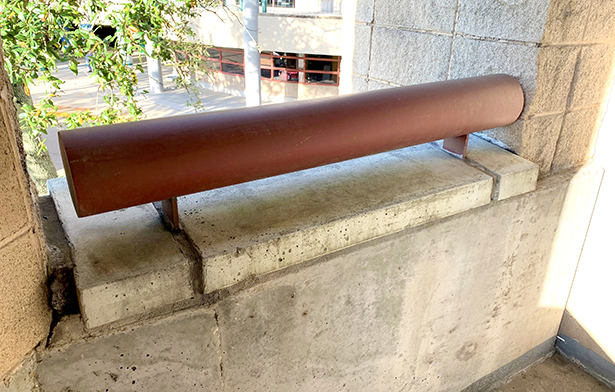FRP Parking Garage Guardrail

In 1994, the architectural firm of Kesells Diboll Kessels (KDK) designed the Tulane University Parking Garage. Within the garage, Strongwell’s composites were used to tackle a challenging maintenance problem affecting all open area parking garages.
When used, steel guardrails in these applications are prone to rust quickly and are difficult to replace as they are attached to concrete. Understanding that this structure was going to be a heavily used asset in an area with limited and restricted parking, the firm wanted a non-metallic solution that could adhere to the architectural design standards of the University while limiting future maintenance costs.
The firm had previous experience in designing with fiberglass walkways within corrosive environments and knew that fiberglass would serve as an excellent long-term alternative to steel guardrails prone to corrosion. Considering lifetime maintenance costs, initial product costs, and installation costs associated with steel guardrails made FRP cost competitive with steel. In addition, the composite rail provided high impact resistance, high corrosion resistance and would never need to be repainted due to rusting.
| TECHNICAL DATA |
|---|
| Product: Parking Garage Custom Guardrail |
| Process: Pultrusion, Fabrication |
| Materials & Sizes: Custom pultruded 6" x 1/4" round tube capped with 1/4" hand layed-up plate |
| For: Brice Building |
| User: Tulane University |
The main body of the composite guardrail is a 6" x 1/4" round tube pultruded in a special color to match the accent colors used on adjacent Tulane University buildings. 1/4" FRP plates made by hand lay-up capped the ends of each tube. Each guardrail is attached to a fiberglass stanchion embedded within the structure.
The design required accurate stanchion placement to match joints within the stone walls of the parking garage. This internal connection is what makes rusted steel guardrails so difficult and impractical to replace, eventually rendering them safety hazards.
According to the contractor, Brice Building, the 3,400 lineal feet of guardrail was easily installed by two workers. It was noted at the time of the install that using steel guardrails would have required a crane and more manpower.
Still in use today, the 820-car parking structure is part of the Collins C. Diboll Complex on Tulane’s Uptown Campus. The guardrails have provided almost 30 years of continuous service with little sign of wear to the stanchions, end caps, or tubes.



